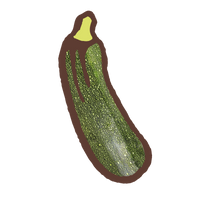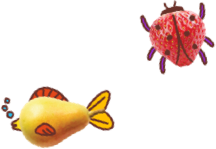Claire Baseley
Infant nutritionist / Makes Ella's Good
Food is more than just fuel and eating is more than just delivering nutrients. Food is a fun, sensory adventure and a chance to bring family and friends together to be social. Follow our tips for taking the stress out of mealtimes to make eating an experience that’s both fun and chilled out!
Eating together as a family helps to create a healthy relationship with food, especially when parents, carers and siblings can role model healthy habits for little ones to copy.
However, this ideal doesn’t always fit with modern day families facing challenges like shift work, low incomes, cramped living conditions + fussy eaters. Let’s be realistic, it’s not always possible to sit together round the dinner table and enjoy a delicious healthy homemade meal!
If you can eat together as a family, maybe once or twice a week, then give it a go. If not, when toddlers are eating, try to sit down with them. Have a small snack so you can all share in the eating experience. For example, if they have a meal including cooked carrot sticks then maybe have some raw carrot sticks as a snack alongside them.
Little kids can easily get distracted by screens, music, TV and toys. Try to keep the eating environment relatively free of distractions, so remove screens and turn off the TV for a few moments, while you focus on enjoying the food.
Toddlers do find having a routine nice and comforting and it can help them to understand when they’ll next be eating (helping parents + carers to deflect from the constant ask for snacks!)
Setting a time for breakfast, lunch and dinner that you more or less stick to in the week, with flexibility for days out and the weekend can provide structure but doing the same with snack time can really help manage the repeated requests for snacks.
If your toddler is constantly in + out of the kitchen then try having a set time for morning and afternoon snacks. Outside of these times, tell your toddler that the kitchen is closed for food but that snack time will be in 20 minutes. At snack time, offer your little one a choice of snacks from a range of healthy options and sit down to enjoy your snack together.
A routine doesn’t have to be strict and there can always be room for spontaneity. However, having a relatively consistent flow of events each day can still offer the reassurance and comfort your toddlers needs.
Little kids learn from the world around them. They’re like little sponges for everything they see, hear, feel, taste + smell. That includes how you talk to them about food and their body.
It’s really important to talk about eating and bodies in a way that sets up a healthy relationship with food and self-image. It’s also very important to role model healthy behaviour yourself which includes eating a balanced diet and talking about your own body positively.
Yes, we might like our little kids to prefer veggies more than cake but the reality is, they will generally prefer less healthy foods over healthier ones. However, labelling cakes, biscuits and crisps as “unhealthy”, “junk”, “naughty” or “bad for you” or talking about veg as “healthy”, “clean” or even saying they will “help you grow big and strong” creates a hierarchy of good or bad foods. This can do the opposite of what you want which is to make the less healthy foods seem more desirable or, even worse, make your little one feel guilty for liking foods that are bad for them. Try and keep references to all foods neutral + you might see your toddler reaching for the broccoli more than you would expect!
Avoid talking about whether foods are healthy, clean, junk or guilty pleasures and talk about their sensory characteristics. For example, “We’re eating broccoli today. Doesn’t it look a lovely green colour?”.
Even if you have a picky eater who has rejected spinach 10 times already, avoid praising your little one for eating, whether it’s trying a vegetable for the first time or finishing their meal.
While some research advises using non-food rewards like stickers for eating vegetables, if you truly want to create a healthy relationship with food, it’s best to avoid rewarding eating with anything, whether stickers, pudding or praise as this can be seen as a pressure to eat.
Pressure to eat can result in your little one ignoring their appetite + eating more to please you; it can create anxiety, meaning your child eats less; or it may make your child think that eating a certain food or amount makes them “good”.
Rather than mentioning your toddler’s eating, talk about the day, praise good behaviour, like sitting well or using cutlery and focus on whether your toddlers tummy is full, rather than what they have eaten.







